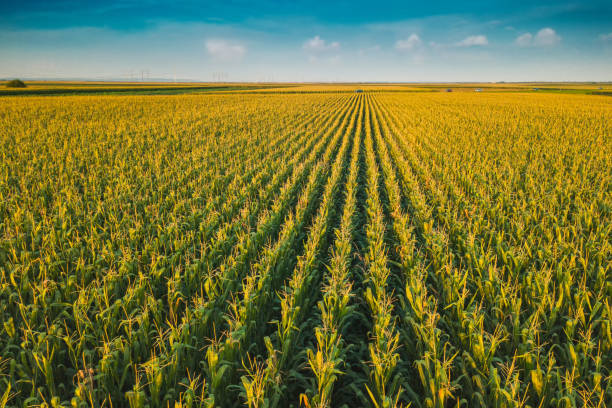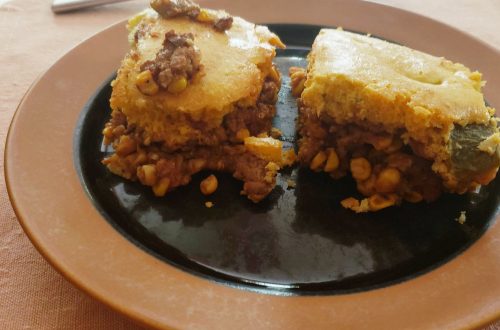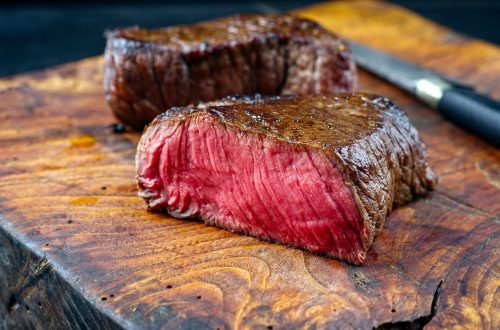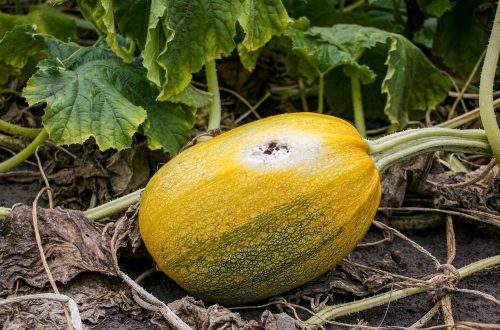
It’s Corn Season, and I Love Sweet Corn
Corn season is here, and I couldn’t be happier. I may have left the Corn Belt farm and the Midwest, but I can’t get sweet corn out of my system. It’s that fresh-from-the-field corn, steamed until just barely done and then doused in butter.
The thing about corn – the fresher the better. Once the corn is picked, the sugars in the kernels begin turning to starch. And starchy corn on the cob is tough and pasty. But corn fresh from the field can’t be beat.
Our farm was located in Del Monte territory. Our town of Rochelle, Illinois was home to a large Del Monte cannery where peas, sweet corn, pumpkins, and lima beans were canned. We knew it as “the Canners,” and the company not only operated its own farms in the area, but also contracted with local farmers to grow the crops. When the crops were ready for picking, Del Monte would bring in its machinery to harvest. I was never a fan of the canned corn, but I did favor the creamed corn. It was the basis for that church supper staple, Scalloped Corn, and my mother was known for her recipe.
Corn poaching
As for those first fields of sweet corn, it was clear that the neighbors couldn’t wait for the corn to go on sale. They were known to get into the fields at night to pick the early ears. Del Monte knew that the yield on some of those first fields would be minimal, at best. I still remember one late-summer afternoon when my father helped me over the barbed wire fence into a Del Monte field, armed with a cloth feed sack to get a couple dozen ears. Since we had been headed home after church, I had to shed my dress clothes and gather those ears wearing only my underwear.
In my teens, we grew about 20 acres of corn for the Canners. When the corn was mature, it was always time for a big cookout. We had a 30-acre woods that was used as creek pasture for a herd of beef cattle, and it was a fine source of oak, hickory, and crabapple. My job was to go down to the woods where I would gather fallen limbs for the fire.
Corn grilling
For my trip to the woods, I loaded the pickup truck with a bucksaw, axe, and other tools. On the way, I’d stop in the field and fill a couple of feed bags with just-picked sweet corn in the husk. Beforehand, I’d fill up a large barrel with water. I’d soak the corn – still in the husk – and when the fire had burned down to hot coals, we’d put a large grill over them, and on went the corn. My next task was to turn the ears periodically and keep them damp with a sprinkler. Cooking in the husk steamed the corn and caramelized some of the kernels. When the outer husks were nicely charred brown, it was time to eat. At about this time, everyone else would arrive to set up tables and to fill out the menu with macaroni salads and baked beans.
When the corn was ready, it was piled to the side where the husks would keep it warm. Onto the grills went steaks and burgers. It was a feast, and I can still remember the flavors and aromas.
Half a century later does not necessarily mark progress. The sugar-enhanced sweet corn hybrids of the 1980s and the Butter and Sugar corn that we buy today clearly lasts longer after picking. But I still shudder when I see consumers husking the corn at farm stands or viewing the plastic-encased packages in the supermarket. I’m not convinced that we’ve evolved.
Corn freezing
When I can get fresh corn at the local stand, I’ll buy about four times more than we’ll eat right away. I’ll husk and steam the ears. Those not consumed at the meal are saved in the freezer for later. I cut the corn off the cob and use my Foodsaver to freeze the cut kernels. I’m happy, because I’ll have real sweet corn to use over the year. It’s especially good in seafood chowder in the dead of winter, which is the best time for shellfish, but well past corn season.
Do you have a favorite way to eat corn? Or an interesting recipe to share?




